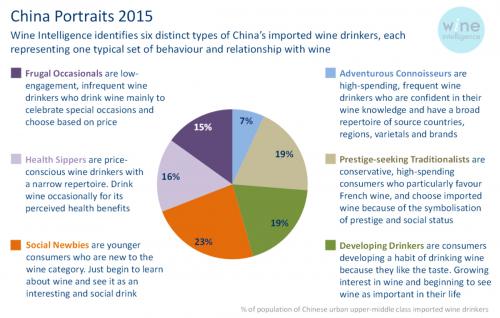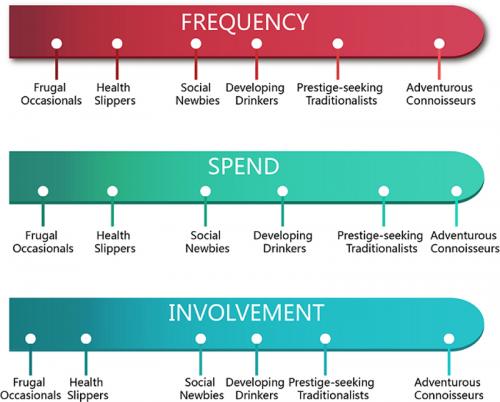Friday, August 12, 2016
Chinese wine consumers are rising
Chinese imported wine market is developing and changing. The major consumers have transferred from “Prestige-seeking Traditionalists” to normal consumers who are younger, less interactive, willing to buy entry level wines. The newly emerging consumers drink wines more often than traditional consumers, expecting to seek cost-effective wines.
Six types of Chinese wine consumers
Based on 3.8 million imported wine drinkers in China, Wine Intelligence report identifies 6 different types of wine consumers. These portrait categories help us make sense of consumer types and consumer behavior, which not only consider the basic elements like age, gender and income, but also the way Chinese consumers interact with wine, including the reasons why they drink wine, the way they make buying decisions …
Among the six types of Chinese wine consumers, “Prestige-seeking Traditionalists” and “Adventurous Connoisseurs” belong to a broad category of “Traditional wine consumers”, while “Frugal Occasionals”, “Health Sippers”, “Social Newbies” and “Developing Drinkers” belong to a new type of “New wine consumers”.
Compared with traditional wine consumers, the four new types of wine consumers drink less, knowing less about wine and preferring lower price.
Change tendency of the major wine consumers
Since the investigation in 2012, the major wine consumers of Chinese imported wine market have been shifting from traditional ones to the four new types of wine consumers. After three years, in Chinese imported wine market, the proportion of wine lovers such as Adventurous Connoisseurs and Prestige-seeking Traditionalists is gradually falling, while the proportion of new types of less-drinking consumers, such as, Health Sippers and Frugal Occasionals, is getting larger, and the newly emerging group Developing Drinkers have accounted for 19%.
In conclusion, wine consumers in China are savvier, more informed and more demanding than ever before. They are increasingly seeking good value, and assert their individualism through wine consumption. Crucial to the success in this must-win battleground is developing a consumer-centric viewpoint within the wine maker organization, and driving that home in terms of developing and adjusting marketing strategies with Chinese consumers in mind.
Marketing suggestions
As we can see, these four new types of consumers take up 74% of Chinese wine consumers, therefore, specific and targeted strategies which differ from the traditional ones are much-needed to capture Chinese wine market.
New types of consumers have a higher price sensitivity.
1. Brand positioning: seize the low and middle cost-effective Chinese wine market to attract a great number of new wine consumers.
2. Channels: take e-commerce as an important distribution channel to reduce the selling cost.
New types of consumers know little about wine, but they are eager to learn about it.
1. Product package: optimize the product package by putting Wechat Barcode on the wine labels or bottles so that after scanning it, consumers can learn the related wine knowledge shown on it.
2. Marketing and promotion: hold lectures on wine knowledge and promote wine in the process of wine knowledge quiz games.
3. Brand maintenance: update topic-related articles on a regular basis on Wechat, Microblog, and other social networking sites.
The appearance of social newbies reflects the facet that for today’s Chinese young people, wine is taking place of Chinese liquor.
Advertising: present the enjoyment and harmony of a group of people drinking wine, advocating drinking wine in festivals, at parties, and on social occasions as the main social trend so as to influence the lifestyles of consumers.
Source: Wine Intelligence China Portraits 2015 Report


